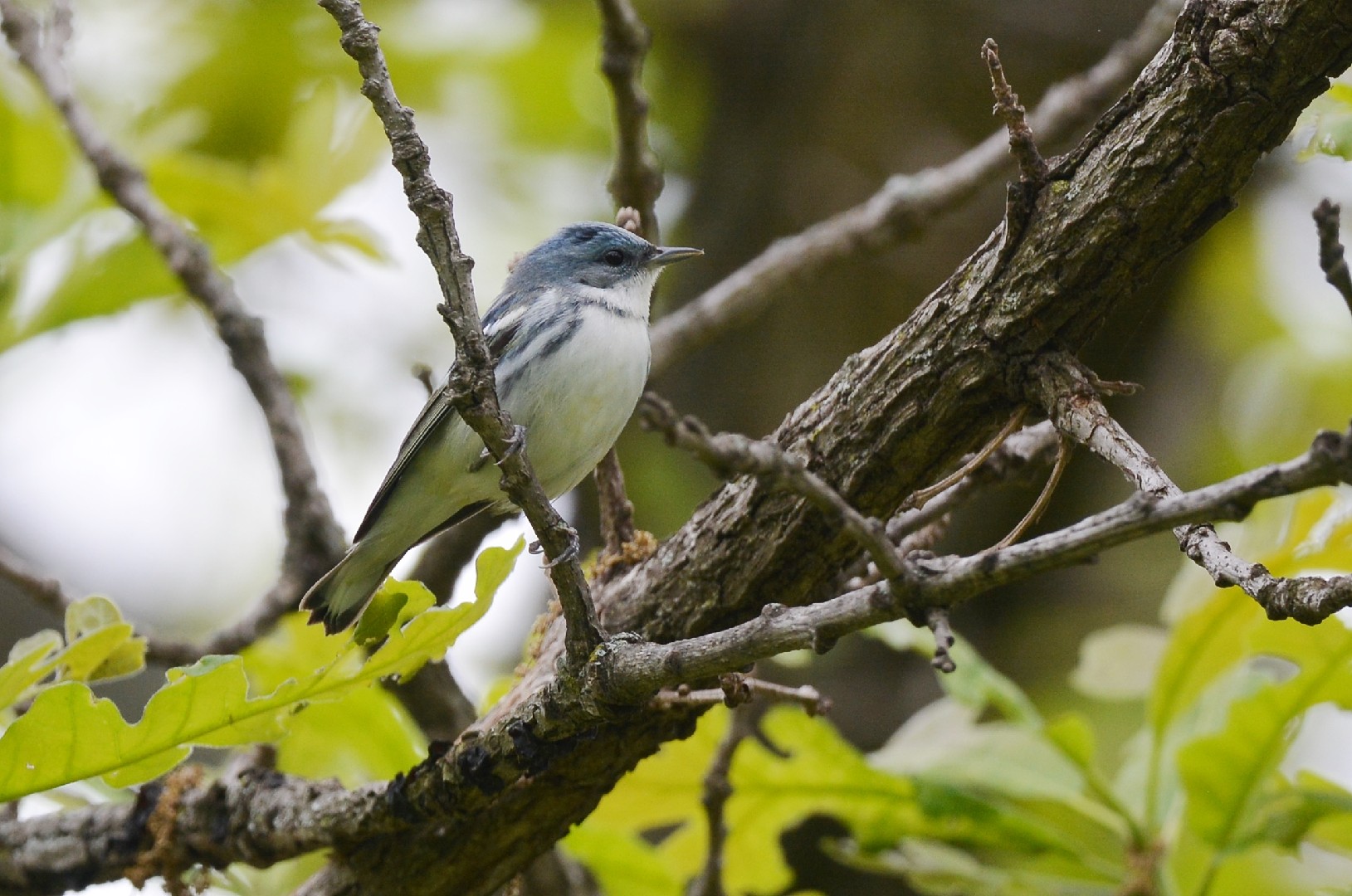Cerulean Warbler
A species of Setophaga Warblers Scientific name : Setophaga cerulea Genus : Setophaga Warblers
Cerulean Warbler, A species of Setophaga Warblers
Botanical name: Setophaga cerulea
Genus: Setophaga Warblers
Content
Description People often ask General Info
 Photo By Andy Reago & Chrissy McClarren , used under CC-BY-2.0 /Cropped and compressed from original
Photo By Andy Reago & Chrissy McClarren , used under CC-BY-2.0 /Cropped and compressed from original Description
Adult males have pale cerulean blue upperparts and white underparts with a black necklace across the breast; they also have black streaks on the back and flanks. Females and immature birds have greyer or greenish upperparts, a pale stripe over the eye, and no streaking on the back and no necklace. All of these birds, regardless of their age, have wing bars and a thin pointed bill. Measurements: Length: 4.3 in (11 cm) Weight: 0.3-0.3 oz (8-10 g) Wingspan: 7.9 in (20 cm) 
Size
11-13 cm (4.5-5 in)
Life Expectancy
6-8 years
Nest Placement
Tree
Clutch Size
1 - 5 eggs
Incubation Period
1 brood
Number of Broods
11 - 12 days
Nestling Period
10 - 11 days
Feeding Habits
Cerulean Warbler primarily consume insects like flies, beetles, weevils, and caterpillars, foraging by hopping along canopy branches and picking prey from foliage. In winter, their diet includes some plant material.
Habitat
Cerulean Warbler are primarily found in extensive, older deciduous forests marked by abundant tall trees, including species such as white oak and sugar maple. They favor environments ranging from riparian bottomlands to dry mountain ridges at elevations above 500 meters, often on north and east-facing slopes. Cerulean Warbler prefer large, mature, and unfragmented woodland habitats with canopy gaps for nesting. On migration and wintering grounds, they utilize a variety of habitats including tropical forests, woodlands, and shade coffee plantations between 1,600 and 6,500 feet in the northern Andes.
Nest Behavior
Cerulean Warbler pairs select the nest site together. Females mainly construct the nest while males sometimes assist by collecting spiderwebs. After building, egg-laying and parental care ensue, though specifics on timing and patterns are not provided.
Nest Characteristics
Cerulean Warbler build their nests on branches in the canopy of white oaks, cucumber magnolias, and sugar maples. These nests are concealed by leaf clumps, often near canopy gaps, and at heights of 16 to 115 feet. They are cup-shaped, woven from bark fibers, grass stems, hair, and bound with spiderwebs.
Dite type
Insectivorous
People often ask
General Info
Feeding Habits
Bird food type
Bird Feeder Type

Small Tube Feeder
Sounds
Song
Recording location: United States
Behavior
Cerulean Warbler typically engage in meticulous foraging activities within the upper canopy, incessantly searching for insects which make up their diet. During breeding, the top third of tall trees becomes the focus of their canopy territories, which pairs defend aggressively, with males even engaging in aerial combat. Breeding season sees pairs remain monogamous, although their high-altitude nesting habits complicate observation. In their winter habitat, cerulean Warbler adapt by joining mixed-species flocks, often with tropical tanagers, maintaining their preference for canopy foraging.
Distribution Area
Their breeding habitats are mature deciduous forests in eastern North America. They migrate to spend the boreal winter in forested mountain areas in South America. 
Species Status
The cerulean warbler is the fastest declining neotropical migrant songbird. Among the many threats they face, their wintering habitat in the northern Andes is dwindling rapidly. Cerulean warblers depend on shade coffee plantations during the winter. This traditional farming technique is at risk as coffee prices fluctuate and pressure to switch to higher-yield sun coffee or other crops intensifies. In fragmented forest areas, this bird is vulnerable to nest parasitism by the brown-headed cowbird. This bird's numbers are declining faster than any other warbler species in the USA; its population in 2006 was less than one-fifth of what it was 40 years before. The American Bird Conservancy (ABC) is working with its Colombian partner, Fundación ProAves, to protect wintering habitat for cerulean warblers and other migrating songbirds. Together they have created the Cerulean Warbler Bird Reserve, the first protected area created for a neotropical migrant. In an effort to advance protection of the cerulean warbler, ABC and its South American partners (Fundacion ProAves, ECOAN and Fundacion Jocotoco), in 2009 produced a Cerulean Warbler Wintering Ground Conservation Plan. The cerulean warbler has been recorded as a vagrant to Iceland. 

 Photo By Andy Reago & Chrissy McClarren , used under CC-BY-2.0 /Cropped and compressed from original
Photo By Andy Reago & Chrissy McClarren , used under CC-BY-2.0 /Cropped and compressed from original Scientific Classification
Phylum
Chordates Class
Birds Order
Perching birds Family
New world warblers Genus
Setophaga Warblers Species
Cerulean Warbler